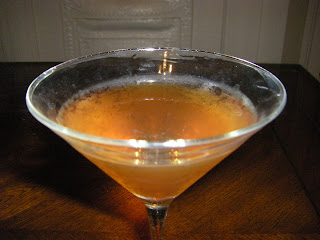All this talk of
Final Wards and
Manhattans has brought me to consider
cycles: those beautiful natural entities which give and take from their components to construct strangely opposite creations, only to continue the process back home. To take three, let's consider the
Citric Acid cycle, the
pitch interval cycle, and the now-dubbed Small Aromatic-Sour cycle. OK, maybe I'll allow Wikipedia to guide those interested in the first two, and I'll just tackle the drinks.
What defines any cycle,
i.e., the number and particulars of its constituents, is somewhat arbitrary, especially in systems with many potential players (such as biological molecular systems or mixology). Just as there are a huge number of molecules floating around in a cell, there are hundreds of cocktail ingredients and exponentially more combinations of them. That's a long way of saying that you could start with any drink and get to any other drink if you allow a large number of ingredient changes. There is nothing ground-breaking about that, just as it's not terribly impressive to get from Tom Hanks to Kevin Bacon by using 100 degrees of separation.
However, a particular, relatively small cycle continues to occur to me, and so I present it to you.
This small Aromatic-Sour cycle is made up of seven of my favorite cocktails. Every time I drink one, I recall at least one or two of its neighbors. Moreover, these drinks are either old-time or modern classics and are here to stay. With only a few ingredients (rye, gin, maraschino liqueur, Chartreuse, sweet vermouth, sugar, bitters, lemon juice, and lime juice) one can create this cycle, and he or she might never feel the need to leave it, given the incredible range of flavors that it encompasses. Are there two drinks more elegant than an
Old Fashioned and a
Last Word? Are there two drinks more
different than an Old Fashioned and a Last Word or a Bijou and a Whiskey Sour? Yet they grow from and into each other seamlessly; and the intervening steps, themselves, are beautifully complex but balanced drinks.
As I've said, there is a near-infinite number of cycles of which one might conceive, but to me this is a seminal one. If any other small cocktail cycles occur to you, say so in the comments section below!



















